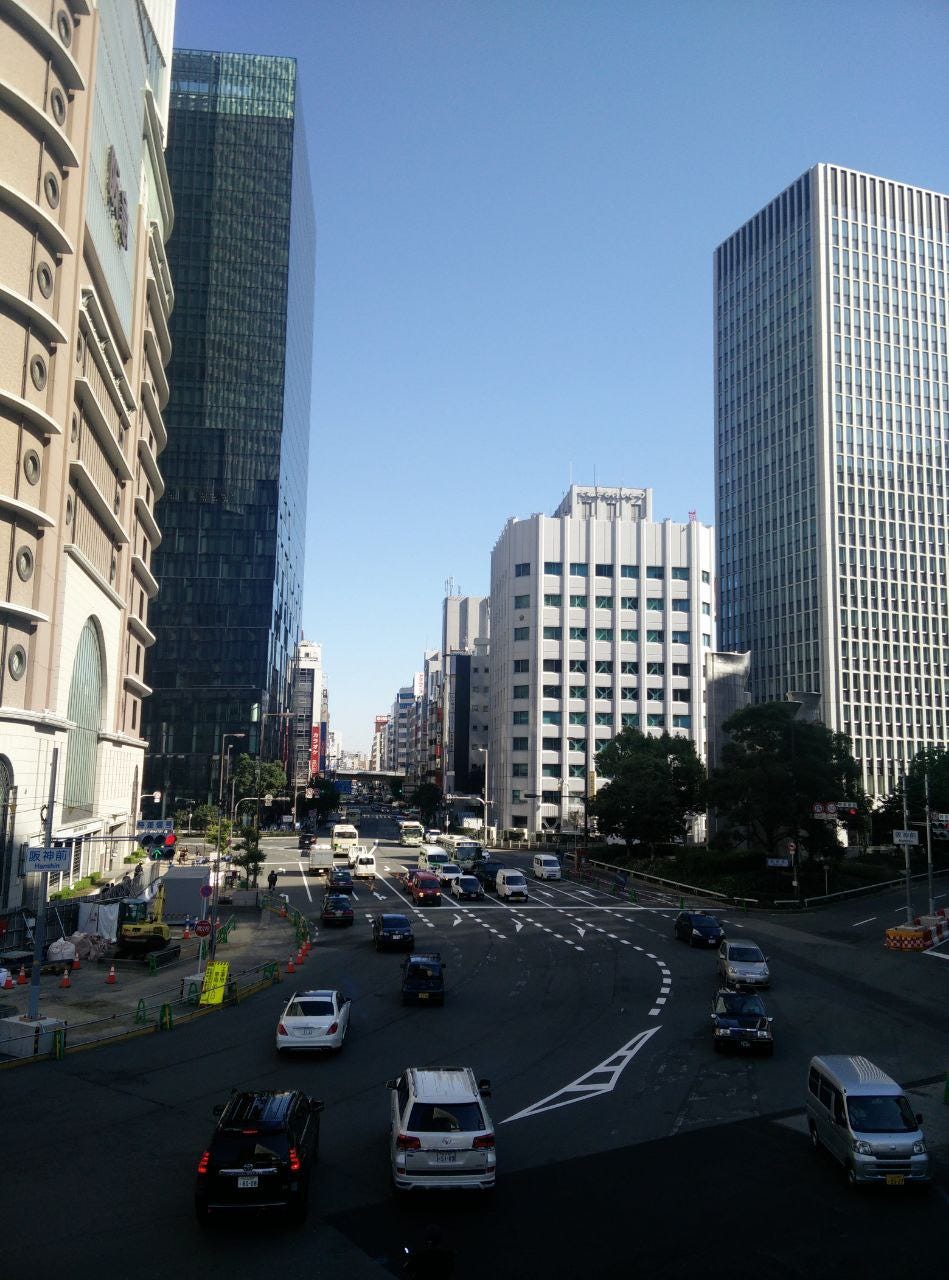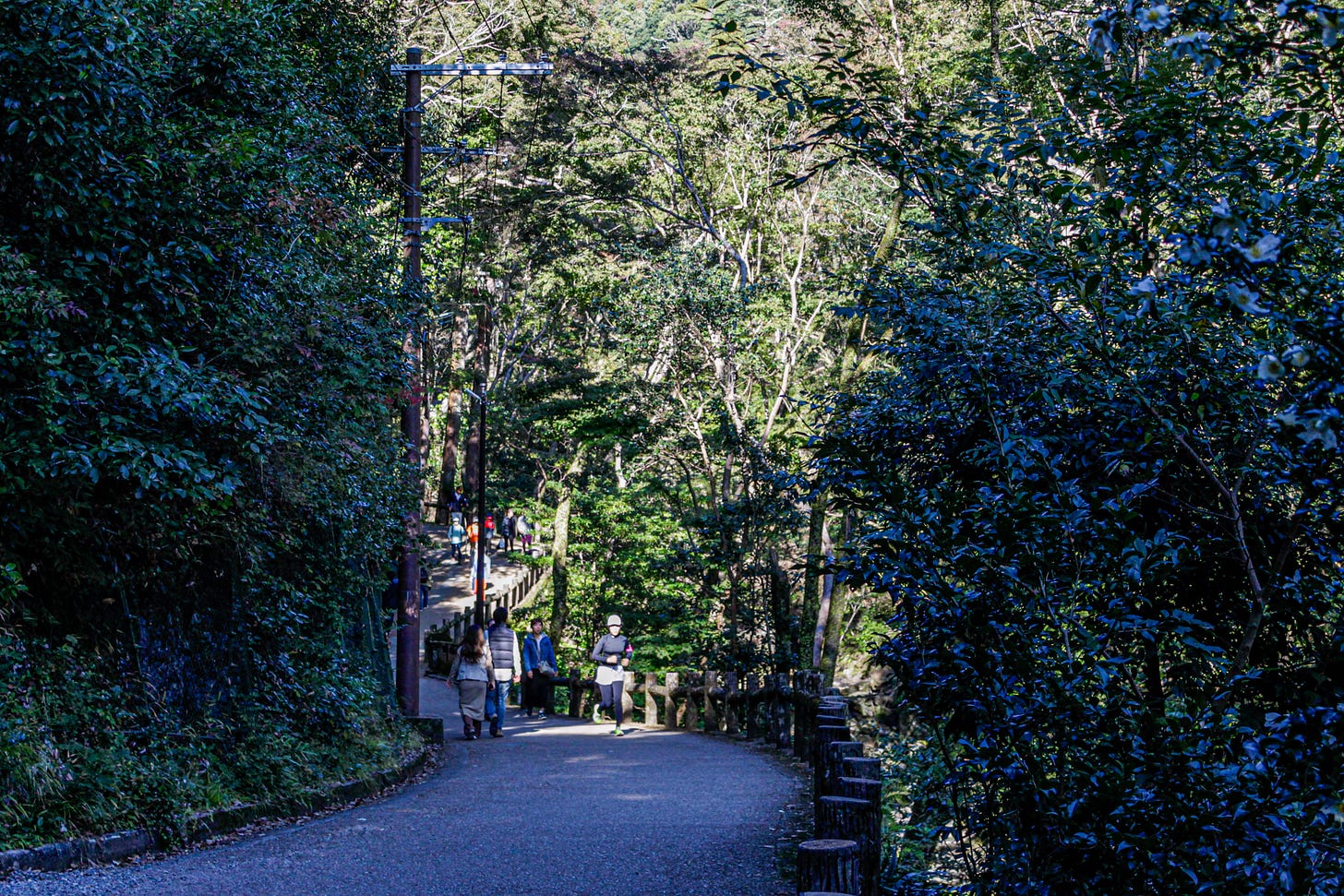In November 2019 after a four-hour bus ride from Hiroshima, I arrived in Osaka. From the central station, I had to take the metro to reach Takashi’s place, I was going to stay with him for two nights. It was late evening when I arrived so we had a small chat together before going to sleep. He is a nurse and he had to go to work in the early morning, but in the afternoon he was free so he could show me a bit of the city.
Osaka pulsates with energy and a unique character that sets it apart. Known as the "Nation's Kitchen," it's a haven for foodies, boasting delectable street eats and Michelin-starred dining alike. The iconic Osaka Castle stands tall amidst a blend of modern skyscrapers and historic neighbourhoods, showcasing the city's rich heritage. From the bustling streets of Dotonbori, adorned with neon lights and liveliness crowds, to the serene grounds of Shitennoji Temple, Osaka offers a kaleidoscope of experiences that captivate everyone who visits it.
I didn't receive the best guidance, so I didn't invest as much time here as I should have, and it turned out to be a bit of a mistake. In Osaka, people are friendly and more open to engaging compared to the rest of Japan, and I could have experienced more of this plus seen more of this dynamic city, but I rushed to visit the next city on my list.
The morning after the first destination I visited was the castle, and I think many people had the same idea because it was crowded, but there were also some student groups as you can see in the pictures below.
Osaka Imperial Castle is a symbol of power, resilience, and historical significance in Japan. With its majestic white walls and striking architecture, the castle stands as a testament to the country's rich feudal past. Originally built in the 16th century by the shogun Toyotomi Hideyoshi, who unified the country, it played a pivotal role in shaping Japan's history, serving as a formidable fortress and a centre of governance. Despite facing destruction and reconstruction over the centuries, the current version of the castle was completed in 1931, Osaka Castle retains its allure, drawing visitors to explore its grand interiors, lush gardens, and panoramic views from atop its towers.
A great park surrounds the castle, which you can visit for free and find a lot of runners, it is a nice place for practising sport or to relax.
The part of the castle I visited was a museum, with several floors explaining the history of Japan and the castle, and at the top, it is possible to have a panoramic view of Osaka. It's beautiful to see how big the castle park is and after it, the skyline is made of skyscrapers. From this point of view, Osaka is like a small Tokyo.
After the castle, I planned to go outside the city to visit a park, to do that I had to go to Umeda at the Osaka station to get a train. Osaka Station is a bustling transportation hub where bullet trains, local trains, and subways converge, connecting the district to the rest of Japan. There I got lost, you can’t imagine how big this station is, and it took me around two hours to find the right platform.
Umeda, often referred to as the heart of Osaka, is a district that epitomizes the city's dynamic energy and modern charm. Towering skyscrapers, vibrant shopping malls, and bustling streets define its landscape. Surrounding the station, an array of shopping complexes such as Osaka Station City and Grand Front Osaka offer many fashion boutiques, gourmet restaurants, and entertainment options. As night falls, the district transforms into a neon-lit playground, with rooftop bars, izakayas, and karaoke joints buzzing with activity.
Located approximately 30 minutes north of Osaka Station lies Minoo Park. It is one of the oldest national parks in Japan, and it is a nice way to escape from the city, I enjoyed the nature and the relaxation that the place gave me.
Minoo Park offers a serene escape into nature's embrace. Known for its lush forests, picturesque waterfalls, and scenic hiking trails, the park beckons nature enthusiasts and weary urban dwellers alike to rejuvenate their spirits. The highlight of Minoo Park is undoubtedly the stunning Minoo Waterfall, a majestic cascade that captivates visitors with its beauty and tranquil surroundings. As you wander along the winding paths lined with maple trees, especially breathtaking during the autumn foliage season, you'll encounter charming temples and quaint teahouses.
The Falls Trail in Minoo Park is a 3 km scenic pathway that winds its way through the lush forest, leading you to the majestic Minoo Waterfall. As you embark on this enchanting journey, the gentle rustle of leaves and the melodious chirping of birds accompany your footsteps, creating a tranquil ambience that soothes the soul. Along the trail, wooden bridges span over babbling streams, offering glimpses of the reddish foliage and occasional glimpses of local wildlife.
A characteristic thing you can find in the park is old ladies selling fried maple leaves, you should try it. Going back from the waterfall, I stopped at Ryuan-ji temple, which legend attributes to the founding by the mystic En no Gyoja in 650 AD. He supposedly trained under the nearby Minoo Waterfall and carved a statue of Benzaiten, the goddess of fortune, enshrining it there. This connection to the goddess of fortune isn't just symbolic, the temple is known as the birthplace of Japanese lotteries! Back in the 18th century, Ryuan-ji held events similar to lotteries, but instead of money, participants received blessings and offerings for good health.
Before it got dark, even if I wanted to stay longer, I had to take the train and get back to the city to meet Takashi, who brought me out for dinner in the most famous district of Osaka. Dotonbori is a labyrinth of neon lights, bustling streets, and mouthwatering aromas that captivate the senses. Renowned as the culinary and cultural heart of the city, Dotonbori has tempted me with its dazzling array of restaurants, street food stalls, shops, and entertainment venues.
He wanted to take me to a special place to eat the best Okonomiyaki in town. Known as Osaka's soul food, Okonomiyaki is a savoury pancake that delights with its teasing flavours and customizable ingredients. The dish typically consists of a batter made from flour, eggs, and dashi, mixed with a variety of ingredients such as cabbage, meat, seafood, and noodles, all grilled on a hot griddle. Topped with a generous drizzle of tangy okonomiyaki sauce, creamy Japanese mayonnaise, savoury bonito flakes, and dried seaweed, each bite offers a symphony of textures and tastes that tease the taste buds.
After dinner, we had a stroll in the district admiring the neon light and the nightlife of the city. Takashi showed me some game rooms and karaoke places before going back home where he made me a crane origami as a gift and asked me to write a message in Italian in a notebook, where he was collecting messages from his guests in their native languages.
The morning after I had to say goodbye to Takashi but not without having breakfast together, then I took a train to Kyoto where Hiroko awaited me, but this story is for another article.
See you soon
Flavio


























Minoo Park sounds like a true gem. Those pancakes look delicious too! A great read as always, Flavio!
There's some great tips here Flavio, perfectly timed for me, I travel to Osaka in two days. 😃